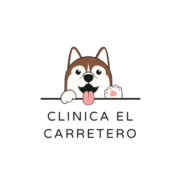As a pet owner and animal enthusiast for over a decade, I’ve discovered that not all pets require the same level of care and attention. Whether you’re a busy professional or a first-time pet parent looking for a low-maintenance companion, choosing the right pet can make all the difference. I’ll guide you through some of the most manageable pets that won’t overwhelm your daily routine or break the bank. From hardy fish species to self-sufficient reptiles, these pets offer companionship without demanding constant attention. They’re perfect for beginners who want to test the waters of pet ownership or experienced animal lovers seeking a more laid-back addition to their family.
- Fish, particularly bettas and goldfish, are among the most low-maintenance pets, requiring only 10-15 minutes of daily care with automated feeding and filtration systems
- Indoor cats rank as highly self-sufficient pets, needing just 20 minutes of daily attention split between feeding and basic care while offering consistent companionship
- Small pets like hamsters and gerbils make ideal low-maintenance companions, requiring minimal space and straightforward care routines with monthly costs under $35
- Reptiles such as leopard geckos and bearded dragons are excellent low-maintenance options, thriving on stable care routines with feeding required only 2-3 times weekly
- The key factors that make a pet “”easy to care for”” include automated care systems, weekly rather than daily habitat cleaning, self-grooming abilities, and predictable care schedules
Easiest Pet to Care For
Low-maintenance pets require minimal daily care investments while providing companionship. These pets adapt to contained environments with basic habitat requirements that remain stable over time.
Time Requirements
A low-maintenance pet operates on a predictable care schedule of 10-15 minutes daily. Here’s what makes a pet time-efficient:
- Automated feeding systems that dispense food at set intervals
- Weekly habitat cleaning instead of daily maintenance
- Self-grooming animals that don’t need regular bathing or brushing
- Species that don’t require daily walks or extensive exercise
- Pets that maintain healthy social bonds without constant interaction
Cost Factors
The financial investment for low-maintenance pets focuses on initial setup costs rather than ongoing expenses. Here’s a breakdown of essential cost considerations:
| Expense Category | Initial Cost | Monthly Cost |
|---|---|---|
| Basic Habitat | $50-150 | $0-10 |
| Food & Supplies | $30-50 | $15-25 |
| Veterinary Care | $40-75 | $5-10 |
| Environmental Control | $20-50 | $5-15 |
- Simple dietary needs with standard food options
- Minimal accessory requirements
- Durable habitat equipment that rarely needs replacement
- Lower veterinary costs due to natural disease resistance
- Reduced grooming supply expenses
Fish as Easy Starter Pets
Fish rank among the easiest pets to maintain with simple daily routines and automated care systems. These aquatic companions thrive in well-maintained environments while requiring minimal hands-on interaction.
Betta Fish Care Basics
Betta fish survive comfortably in compact 5-gallon tanks with basic equipment: a heater, filter and water conditioner. These solitary swimmers need feeding once daily with 2-3 pellets of specialized betta food. The maintenance schedule includes:
- Change 25% of tank water weekly
- Clean filter media monthly
- Monitor water temperature at 76-82°F
- Test water parameters bi-weekly
- Remove uneaten food after 5 minutes
Goldfish Maintenance
Goldfish require larger spaces than bettas with specific care requirements for optimal health. A proper setup includes:
| Care Component | Requirement |
|---|---|
| Tank Size | 20+ gallons |
| Water Changes | 30% weekly |
| Feeding | 2-3 times daily |
| Temperature | 68-74°F |
| Filter Type | Double filtration |
Essential goldfish care tasks include:
- Vacuum substrate weekly
- Replace filter cartridges monthly
- Test ammonia levels twice weekly
- Trim plants as needed
- Check for signs of illness daily
- Timed LED lighting
- Programmed feeding schedules
- Continuous filtration
- Temperature regulation
- Water movement control
Cats: Independent and Self-Sufficient
Cats rank among the most self-reliant pets, requiring minimal daily supervision while offering consistent companionship. These natural self-groomers maintain their hygiene independently, making them ideal for busy households.
Basic Cat Care Requirements
Indoor cats thrive on a 20-minute daily care routine split between two feeding sessions. Here’s what cats need:
- Food: One measured cup of dry food split into morning and evening meals
- Water: Fresh water in clean bowls, changed twice daily
- Litter Box: Daily scooping with complete changes every 7 days
- Grooming: Weekly brush sessions for short-haired cats, bi-weekly for long-haired breeds
- Play: 10-15 minutes of interactive playtime using wand toys or laser pointers
| Monthly Cat Care Costs | Average Cost |
|---|---|
| Premium Cat Food | $20-30 |
| Cat Litter | $15-20 |
| Basic Supplies | $10-15 |
| Routine Vet Care | $30-40 |
Indoor vs Outdoor Cats
Indoor cats live in controlled environments that eliminate common risks:
Indoor Benefits:
- Protected from traffic accidents
- 12-18 year average lifespan
- No exposure to wildlife diseases
- Consistent feeding schedule
- Regular health monitoring
Outdoor Considerations:
- Higher risk of injuries
- 2-5 year average lifespan
- Exposure to parasites
- Irregular feeding patterns
- Increased veterinary needs
Indoor cats maintain healthier lifestyles with regulated temperature exposure between 65-80°F. They require 100 square feet of living space with vertical climbing opportunities like cat trees or window perches.
Small Pets That Need Minimal Care
Small pets offer compact companionship with straightforward care routines. These pocket-sized companions require less space than traditional pets while maintaining engaging personalities.
Hamsters and Gerbils
Hamsters adapt perfectly to solo living in 450-square-inch enclosures with 6-inch deep bedding. I maintain my hamster’s habitat by:
- Spot-cleaning the cage every 3 days
- Providing fresh water daily
- Adding 2 tablespoons of food every 48 hours
- Replacing bedding completely every 2 weeks
- Installing an exercise wheel measuring 8-12 inches
| Hamster Care Costs | Monthly Amount |
|---|---|
| Food | $8-12 |
| Bedding | $10-15 |
| Treats | $5-8 |
| Total | $23-35 |
Pet Rats
Pet rats demonstrate high intelligence with minimal space requirements in 2-cubic-foot cages. Their care routine includes:
- Cleaning cage floors daily
- Refreshing water bottles every 24 hours
- Feeding 2-3 tablespoons of rat food per rat
- Sanitizing the entire habitat weekly
- Providing 1 hour of supervised playtime daily
| Rat Care Essentials | Cost Per Month |
|---|---|
| Premium Rat Food | $15-20 |
| Bedding Materials | $12-18 |
| Enrichment Items | $5-10 |
| Total | $32-48 |
These social creatures thrive in pairs or small groups, sharing space efficiently in multi-level cages with proper ventilation.
Low-Maintenance Reptile Options
Reptiles rank among the most manageable pets due to their stable care routines and minimal daily maintenance requirements. These cold-blooded companions thrive in controlled environments with predictable feeding schedules.
Leopard Geckos
Leopard geckos establish straightforward care patterns in 20-gallon terrariums with specific temperature zones. These docile reptiles eat crickets or mealworms 2-3 times weekly, reducing daily feeding commitments. The habitat maintenance includes:
- Spot cleaning droppings daily (2-3 minutes)
- Changing water every 24 hours
- Maintaining 88-90°F basking area temperature
- Replacing substrate monthly
- Monitoring humidity at 30-40%
Monthly care costs average $25-30, covering:
| Expense Item | Monthly Cost |
|---|---|
| Insects | $15-18 |
| Substrate | $5-7 |
| Electricity | $5 |
Bearded Dragons
Bearded dragons adapt well to handling and display consistent behavior patterns in 40-gallon terrariums. These omnivorous reptiles consume a mix of insects and vegetables on an established schedule:
- Feeding adults every 48 hours
- Providing fresh greens 3 times weekly
- Maintaining 95-105°F basking temperature
- Cleaning food dishes daily
- Replacing UVB bulbs every 6 months
| Expense Item | Monthly Cost |
|---|---|
| Insects/Vegetables | $30-35 |
| Substrate | $8-10 |
| Electricity | $10-12 |
Choosing a low-maintenance pet doesn’t mean compromising on the joys of pet ownership. I’ve found that fish hamsters cats and reptiles make excellent companions for busy individuals or first-time pet owners. These animals offer the perfect balance of minimal care requirements and meaningful interaction.
Whether you’re drawn to the peaceful presence of a betta fish the independent nature of cats or the fascinating world of leopard geckos there’s a low-maintenance pet that’ll fit your lifestyle. I recommend starting with one of these easier-to-care-for pets to build confidence and experience in pet ownership.
Remember that while these pets need less attention they still deserve dedicated care and love. With proper habitat setup and a consistent care routine you’ll create a happy home for your new companion while maintaining a manageable schedule.

